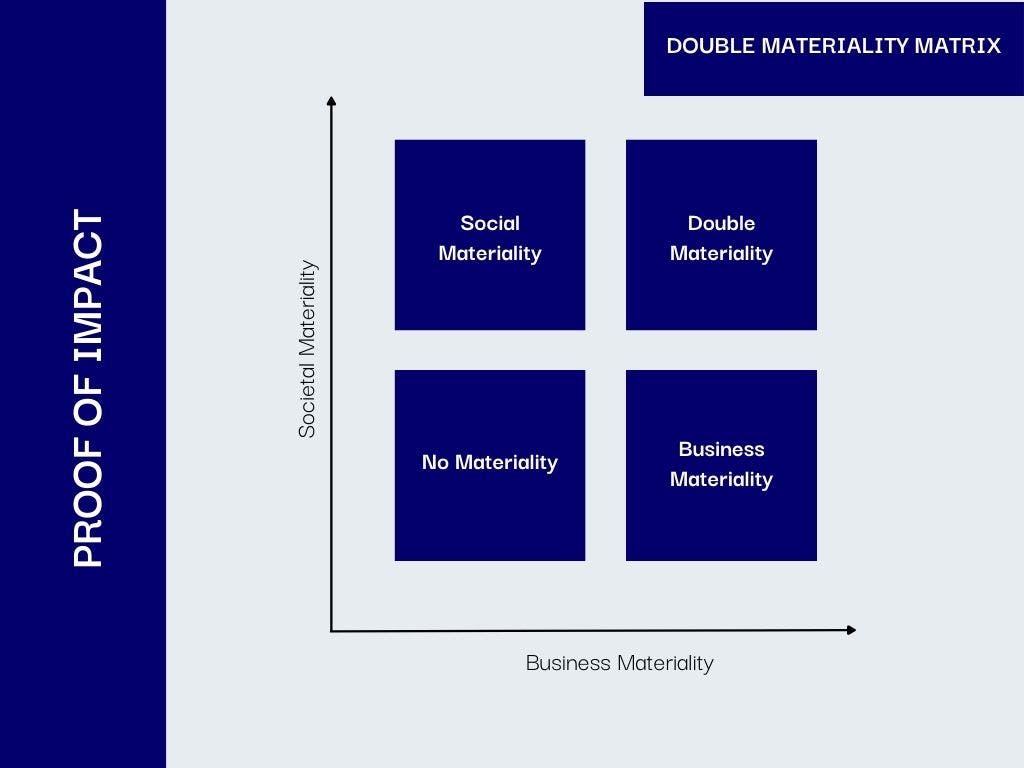4 Steps to an Effective ESG+I Materiality Assessment

Materiality assessments are increasingly being utilized to gather stakeholder input to assess which social and environmental issues the organization should focus on addressing. Materiality assessments allow an organization to engage its community, ultimately establishing a data-driven foundation for its ESG+I measurement program.
What is Materiality Assessment?
A materiality assessment is a structured information gathering exercise that aims to identify specific ESG+I issues that are material to an organization. The insights gathered through the assessment are able to guide an organization’s ESG+I measurement and management program, as well as reveal ESG+I risks and opportunities that are present to the organization.
To perform a successful ESG+I Materiality Assessment, the following 4 steps should be part of your plan:
1. Design your materiality assessment and scoring methodology
2. Identify stakeholders, distribute the assessment, and collect information
3. Analyze the results
4. Integrate the results into an ESG+I measurement program
Design your materiality assessment and scoring methodology
A strong materiality assessment begins with a clear and structured way of gathering and analyzing information. This may come in the form of a survey or a spreadsheet based analysis. The key is to design for a scalable, structured, and measurable information gathering exercise.
The assessment should ask stakeholders to rate the materiality of each issue category selected to include in the survey. The categories selected should be based on common reporting frameworks such as SASB, GRI, PRI, SDGs, SFDR, PCAF, and the GHG Protocol. In order to generate more granular detail, the ratings can be made across multiple materiality dimensions; the most common being “double materiality,” meaning the degree of materiality to the business and to society. Additional materiality dimensions include industry, region, organization size, or stakeholder values.
Identify stakeholders, distribute the assessment, and collect information
Once the assessment is designed, you should identify which stakeholders you wish to engage to complete the assessment. It is important to include both internal stakeholders, meaning employees, department heads, board members, and executives, as well as external stakeholders, meaning customers, partners, investors, industry groups, NGOs, and thought leaders.
Gathering information from a wide range of stakeholders allows for your materiality assessment to be broadly representative of your community and it allows for your analysis to cut across different stakeholder categories, which will provide an additional layer of insight to your results.
Analyze the results
Once the materiality assessment’s information gathering period is closed, it is time to analyze the results. The goal of the analysis is to rank and identify which impact categories are most material to your organization. The answers should be scored and analyzed across your desired dimensions, ultimately revealing a ranked hierarchy of material impact categories. The most common form of analysis is “double materiality,” which integrates business and societal stakeholders. On the other hand, single or multiple materiality isolates the risks and opportunities along different dimensions, which can also be useful depending on the insights your organization wishes to gather.
Once analyzed, it is useful to visualize the results. The most common visualization is a 2D matrix graph that plots each issue category based on the score and dimension. In the example below, the top right represents double materiality and bottom left represents categories that ranked low on both business and societal materiality.

Integrate the results into an ESG+I Measurement Program.
The materiality assessment is the foundation of a successful ESG+I measurement program. By the completion of your materiality assessment you should have a structured analysis of your organization’s impact priorities. The next step is to continue building out your ESG+I program. These next steps include metric selection, data collection, performance measurement, and reporting.
